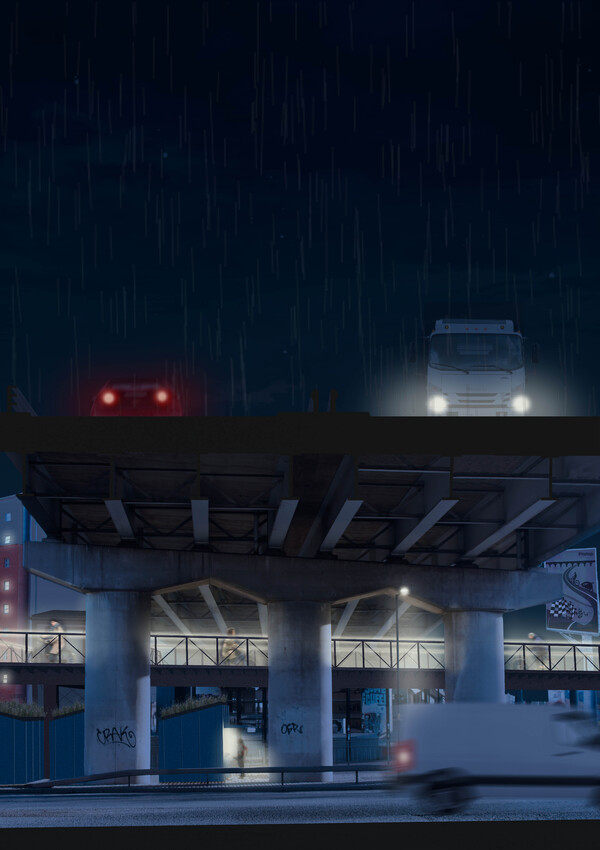How can we permeate infrastructural boundaries to stimulate urban mobility? The principal theme of temporality has established my thesis research and led to the phasing of a scheme based upon testing and response. Architecture should be experimental. How can we, as designers, understand wholeheartedly what a place needs and each unique response, until said happens? We can outline future phasing strategy, but the magic lies within the authentic evolution through each live phase as it unfolds. Designing for a sustainable future is critical. Bicycle infrastructure can grant opportunity through accessibility. Cycling is healthier, for bodies, for cities, for the planet. The revitalisation of place currently dominated by vehicular infrastructure must reactivate life and engagement at the human scale. Pitstop is a phased masterplan for Mayfield, designed to determine a state of change for the future of Manchester as a sustainable city. It is the repetition of microarchitecture that establishes its power and influence. The architectural typology of the kiosk has been proven to have powerful effect time and time again – each representing societal culture and technology of its time. Through the age of the bicycle - a time of the Climate Crisis – it is more important than ever to bring a new, representative microarchitecture to fruition. The beginning phase of Pitstop is the responsive reconfiguration of said kiosks – developed as human-scale stopping stations to aid the needs of cyclists. This interim proposal paves the way for permanent infrastructure to be designed and constructed at a later phase, with the knowledge and insight of true site testing. The invisible network formed across the site becomes visible and active in the next phase. This ensures that the proposed masterplan will be relevant, appropriate and useful.


